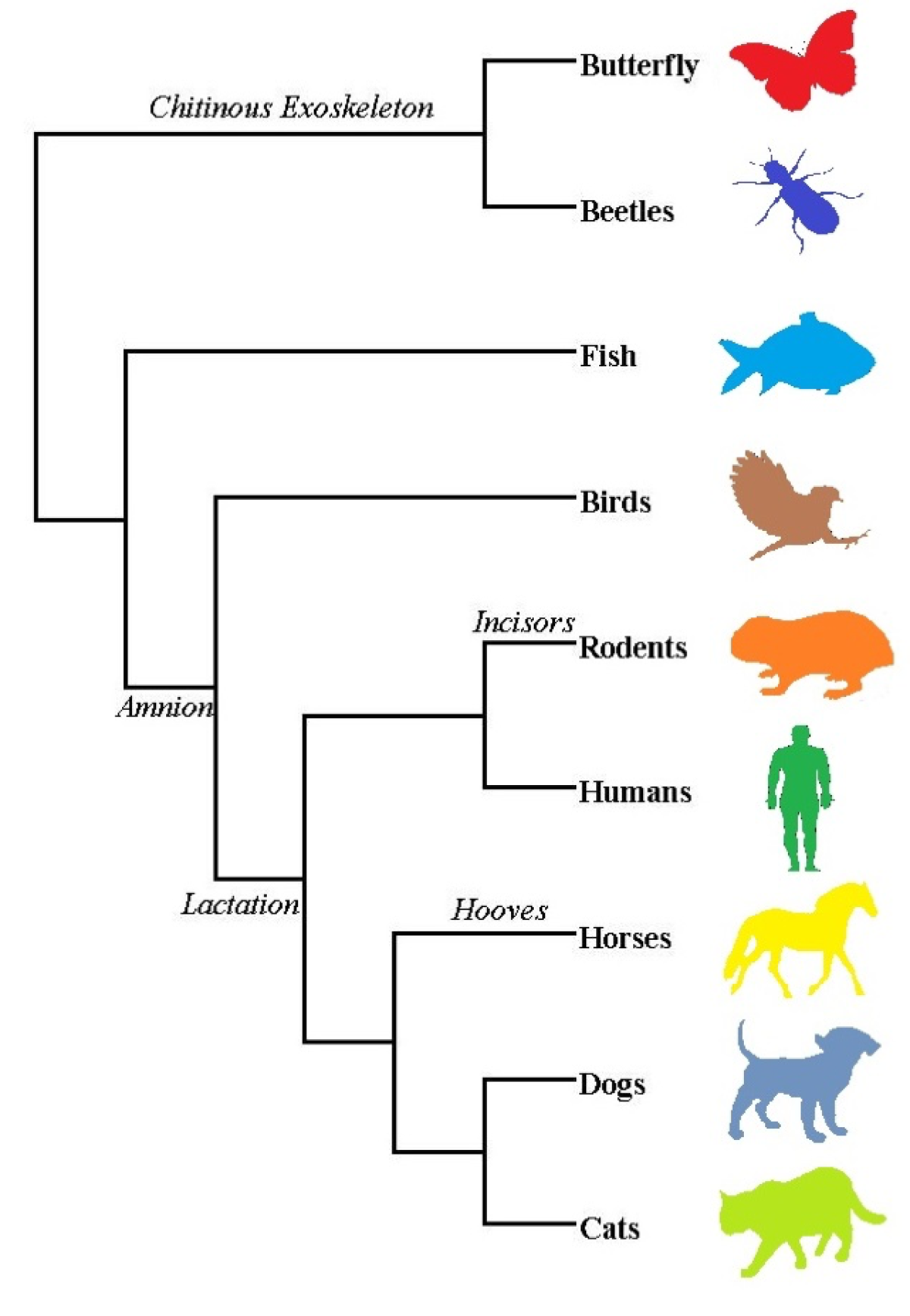PhD project Thilo Schramm

PhD project Thilo SchrammModelling and analyzing university level students’ tree-reading abilities
Evolutionary biology is seen as unifying concept of all biological sub-disciplines, making knowledge about processes and concepts of evolution a prerequisite for many biological topics. Phylogenetic trees are the most direct representations of evolutionary history and macro-evolutionary processes, thus being an indispensable tool in learning about evolution (Baum et al., 2005). Multiple studies of the last years showed that high school, undergraduate and graduate students but also biologists are prone to make mistakes, many of which show serious misunderstanding, in constructing and interpreting phylogenetic trees (Blacquiere & Hoese, 2016; Meir et al., 2007). A number of widespread learners‘ conceptions are reported, many being heavily based on teleological ideas (Schramm & Schmiemann, 2019).

Skills needed in handling phylogenetic trees are subsumed under the term ‘tree-thinking’. Different groups presented skill-systems of tree-thinking (Halverson & Friedrichsen, 2013; Kummer et al., 2019; Novick & Catley, 2016), but some of these have not been empirically tested so far. There are no findings on possible correlations to other potentially relevant variables like spatial thinking or evolution specific content knowledge.
In the light of these findings, this project will survey the skills of German (under-)graduate students in working with phylogenetic trees and in how far these skills change during their academic studies. To this end, a synthetic skill-system of Tree-Thinking, based on the published skill systems, has been derived (Schramm et al., 2019) and is empirically tested.
Furthermore, German and American university level textbooks are analyzed regarding the way evolutionary relatedness is presented in diagrams. Insights from this part of the study are meant to give insights in how far educational materials in Germany and the US are comparable and thus, in how far US-American concepts to teach Tree-Thinking can be transferred to German universities.
Findings of this work can be used practically to support students in improving Tree-Thinking and to reduce learners’ conceptions to facilitate an easier and deeper understanding of evolution.
Project-based publication(s)
Schramm, T., Jose, A., & Schmiemann, P. (2022). How to classify your dragons: On teaching tree-reading with the use of fantastical creatures. The American Biology Teacher, 84(5), 308–311. https://doi.org/10.1525/abt.2022.84.5.308
Schramm, T., Jose, A., & Schmiemann, P. (2021a). Modeling and Measuring Tree-Reading Skills in Undergraduate and Graduate Students. CBE Life Sciences Education, 20(3). https://doi.org/10.1187/cbe.20-06-0131
Schramm, T., Jose, A., & Schmiemann, P. (2021b). Seeing the Woods for the Trees Again: Analyzing Evolutionary Diagrams in German and US University-Level Textbooks. Education Sciences, 11(8), 367. https://doi.org/10.3390/educsci11080367
Schramm, T., Schachtschneider, Y. & Schmiemann, P. (2019). Understanding the tree of life: an overview of tree-reading skill frameworks. Evolution: Education and Outreach, 12(1). https://doi.org/10.1186/s12052-019-0104-3
Schramm, T. & Schmiemann, P. (2019). Teleological pitfalls in reading evolutionary trees and ways to avoid them. Evolution: Education and Outreach, 12(1). https://doi.org/10.1186/s12052-019-0112-3
References
Baum, D. A., Smith, S. D. & Donovan, S. S. S. (2005). Evolution. The tree-thinking challenge. Science (New York, N.Y.), 310(5750), 979–980. https://doi.org/10.1126/science.1117727
Blacquiere, L. D. & Hoese, W. J. (2016). A valid assessment of students’ skill in determining relationships on evolutionary trees. Evolution: Education and Outreach, 9(1), 979. https://doi.org/10.1186/s12052-016-0056-9
Halverson, K. L. & Friedrichsen, P. (2013). Learning Tree Thinking: Developing a New Framework of Representational Competence. In D. Treagust & C.-Y. Tsui (Hg.), Models and Modeling in Science Education: Bd. 7. Multiple representations in biological education (Bd. 7, S. 185–201). Springer. https://doi.org/10.1007/978-94-007-4192-8_11
Kummer, T. A., Whipple, C. J., Bybee, S. M., Adams, B. J. & Jensen, J. L. (2019). Development of an Evolutionary Tree Concept Inventory. Journal of Microbiology & Biology Education, 20(2). https://doi.org/10.1128/jmbe.v20i2.1700
Meir, E., Perry, J., Herron, J. C. & Kingsolver, J. (2007). College Students' Misconceptions About Evolutionary Trees. The American Biology Teacher, 69(7), e71-e76. https://doi.org/10.1662/0002-7685(2007)69[71:CSMAET]2.0.CO;2
Novick, L. R. & Catley, K. M. (2016). Fostering 21st-Century Evolutionary Reasoning: Teaching Tree Thinking to Introductory Biology Students. CBE life sciences education, 15(4). https://doi.org/10.1187/cbe.15-06-0127
